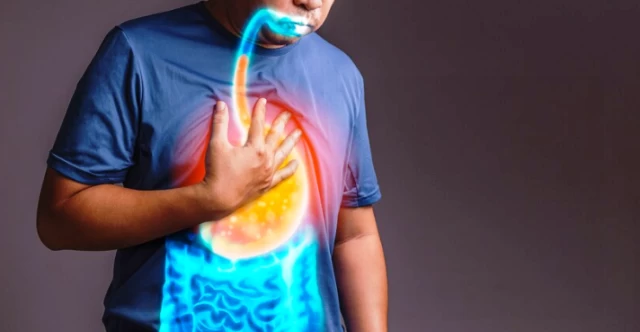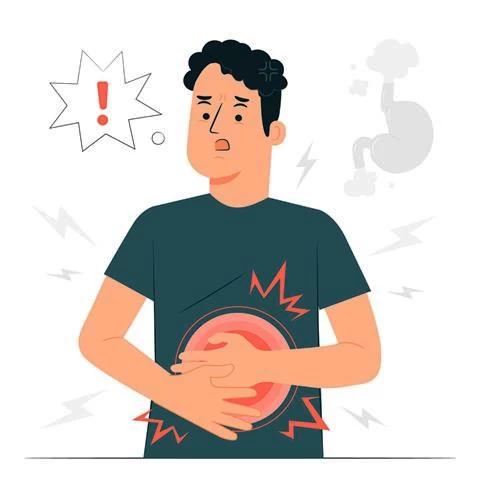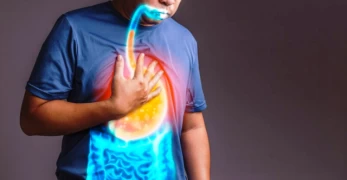
Gastroesophageal Reflux Disease - Part 1: Formation, Frequency, Diagnosis
- Gastroesophageal Reflux Disease - Part 1: Formation, Frequency, Diagnosis
- What is Gastroesophageal Reflux Disease?
- How Does Gastroesophageal Reflux Disease Occur?
- Factors responsible for GERD include:
- Frequency of GERD Worldwide and in Turkey
- Diagnosis of GERD
We have all experienced occasional symptoms such as heartburn, bitter taste in the mouth, or burning sensations in the throat or chest. However, when these symptoms intensify and increase in frequency, they are considered a medical condition that requires attention and treatment. In the first part of this two-part article, I will focus on the causes, frequency, and diagnosis of Gastroesophageal Reflux Disease (GERD). In the second part, I will discuss surgical treatment.
What is Gastroesophageal Reflux Disease?
Gastroesophageal reflux disease (GERD) is a chronic condition characterized by the backward flow of stomach contents into the esophagus, resulting in symptoms. The stomach has protective mechanisms against the corrosive substances it contains. Due to these defense mechanisms, stomach acid, even at normal acidity levels, cannot harm the stomach. However, the esophagus lacks these defense mechanisms. Therefore, when stomach acid flows back into the esophagus, it irritates the vulnerable esophageal lining, even if the acid is at normal acidity levels.
How Does Gastroesophageal Reflux Disease Occur?
Normally, a muscular structure called the lower esophageal sphincter (LES) at the junction of the esophagus and stomach prevents the backflow of stomach contents into the esophagus. However, if this sphincter weakens or relaxes, stomach contents can reflux into the esophagus. While the stomach's inherent defense mechanisms protect it from the corrosive substances in its contents, the unprotected esophageal lining can be irritated by the refluxed stomach acid.

Factors responsible for GERD include:
- Disturbances in the defense mechanisms of the esophagus.
- Relaxation or upward displacement of the Lower Esophageal Sphincter.
- Dietary habits that facilitate reflux (fatty foods, alcohol, smoking, medications, etc.).
- Excessive acid secretion, delayed stomach emptying, and the backflow of bile into the stomach.
- Increased abdominal pressure due to excess weight or pregnancy.
These factors typically act together in the development of GERD and vary from individual to individual.
Frequency of GERD Worldwide and in Turkey
GERD is a widespread condition globally, especially in developed countries where Western-style eating habits, obesity, and other lifestyle factors contribute to an increased prevalence of GERD. In the United States, the prevalence of GERD ranges from 13% to 29%, while in Sweden, it is 17%, and in the United Kingdom, it is 10%.
In Turkey, GERD is a common health issue, with an estimated prevalence of around 20%. These rates may vary depending on patients' symptoms, age, and other factors.
Although GERD generally tends to increase with age, it can still occur in children and young adults. The risk of GERD also increases during pregnancy due to hormonal changes and increased abdominal pressure.
While GERD symptoms often affect the quality of life, serious complications rarely develop in most cases. However, chronic and untreated GERD can lead to complications such as esophagitis, Barrett's esophagus, and esophageal cancer.
Diagnosis of GERD
The diagnosis of GERD is typically based on symptoms, the patient's history, and various laboratory tests or imaging methods. Here are some methods commonly used for GERD diagnosis:
- Patient History and Symptom Evaluation: The patient's symptoms are thoroughly evaluated. Information about the duration of symptoms and factors that exacerbate or alleviate them is crucial in the diagnostic process.
- Physical Examination: The severity of symptoms is assessed during a physical examination, and other potential causes are ruled out.
- Endoscopy (Upper Gastrointestinal Endoscopy): This procedure uses a flexible tube with a camera to visualize the esophagus, stomach, and duodenum. It is essential for evaluating esophagitis, Barrett's esophagus, or other potential complications. It also checks for lower esophageal sphincter laxity.
- 24-hour pH Monitoring: This test measures the acidic environment within the esophagus through a catheter over a 24-hour period. It helps assess the frequency and duration of reflux.
- Manometry: Measures the pressure of the lower esophageal sphincter and evaluates esophageal muscle movements. It aids in detecting muscle weakness caused by GERD.
- Barium X-Ray (Barium Esophagography): X-Ray images are taken after administering a barium liquid to show the movement of the esophagus and stomach contents.
The diagnosis of GERD usually involves a combination of these methods, considering the severity and frequency of symptoms, as well as potential complications.
In this article, I have discussed the causes of gastroesophageal reflux disease, its frequency, and diagnostic methods. I look forward to discussing surgical treatment for GERD in the second part. Stay healthy...

Op. Dr. Sedat Ocak
General Surgery Specialist





